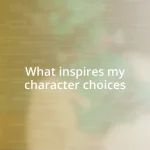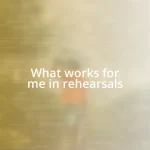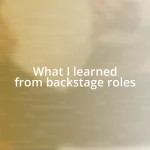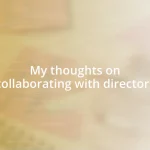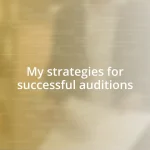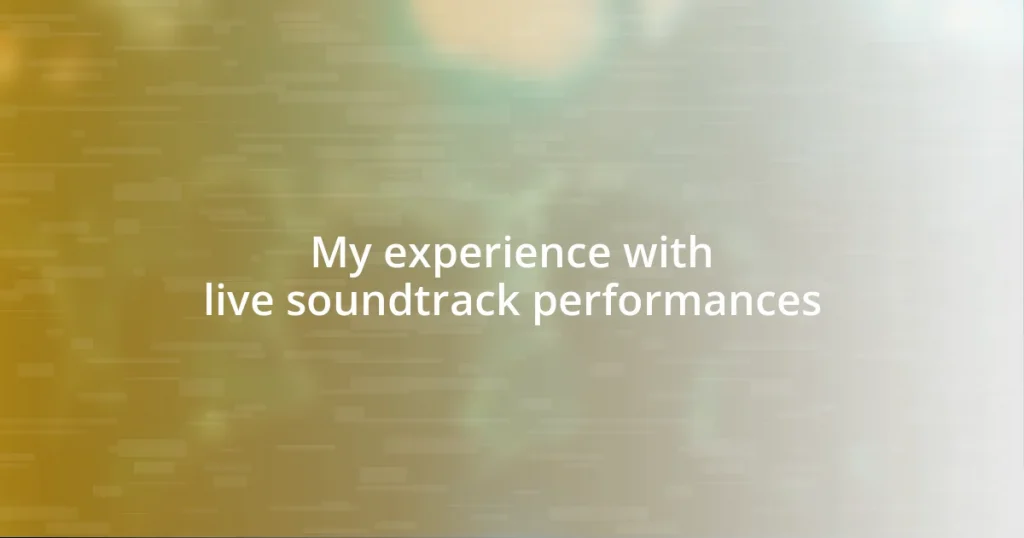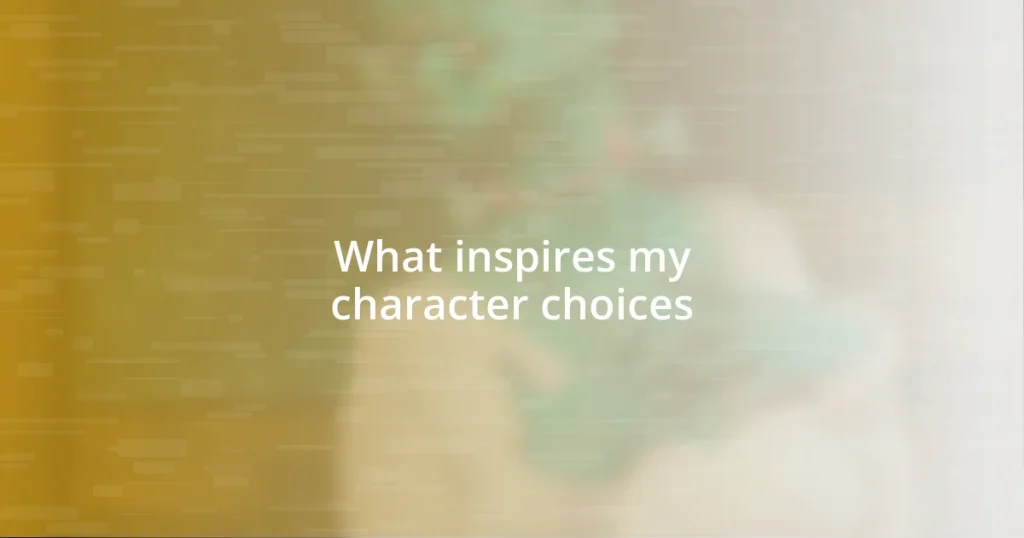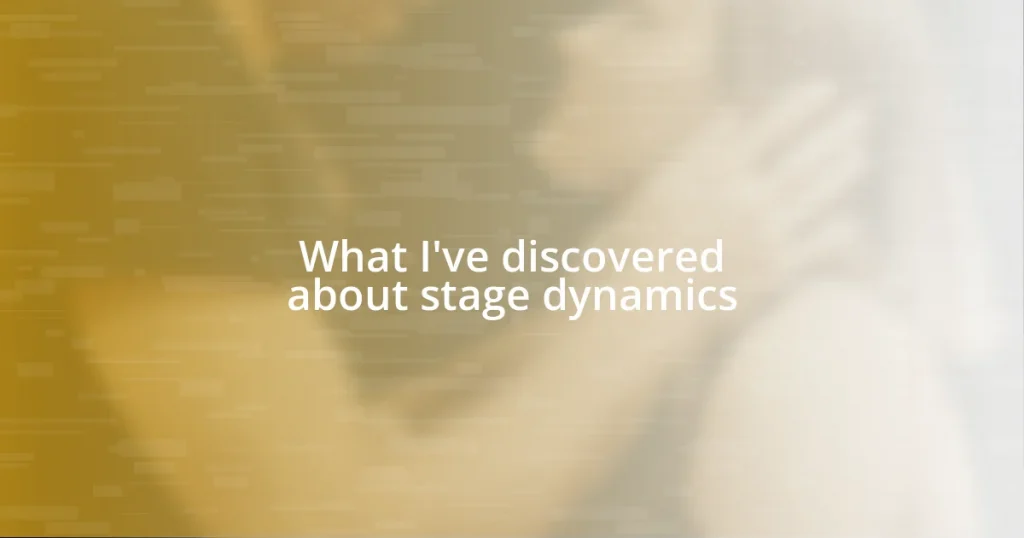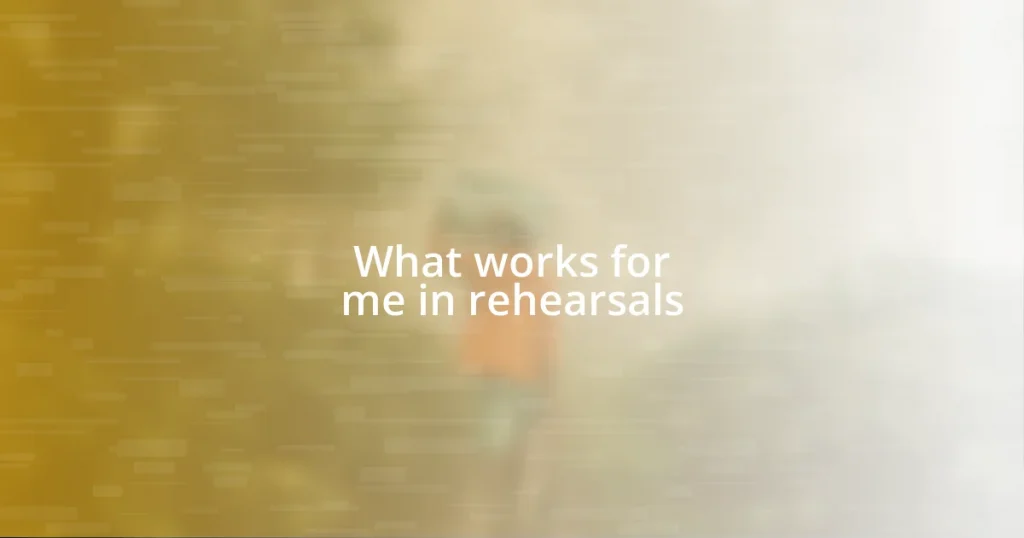Key takeaways:
- Live soundtrack performances enhance the cinematic experience by synchronizing music with film, evoking strong emotional responses from the audience.
- Preparation is crucial, including rehearsals, soundchecks, and familiarizing with the film to ensure a cohesive and effective performance.
- Facing challenges such as timing issues and audience interactions requires adaptability and strong communication within the ensemble to maintain performance quality.

Understanding live soundtrack performances
Live soundtrack performances are a unique blend of cinema and music that create an immersive experience for the audience. I remember attending a show where an orchestra played the score alongside a classic film, and the synergy between visuals and sound was simply breathtaking. Isn’t it fascinating how music can transform the way we perceive a story?
These performances often involve musicians synchronizing their compositions with the unfolding action on screen, resulting in a dynamic and engaging event. During one such performance, I found myself tapping my feet to the rhythm, completely enveloped by the soundscape. Can you imagine the level of coordination and empathy needed among the artists to achieve such harmony?
Participating in live soundtrack events can evoke a profound emotional response, as the music heightens the moments of tension and joy in the film. I still feel the thrill from the last show I attended, where a haunting melody resonated during a pivotal scene, leaving the audience in a collective gasp. Have you ever felt that connection where sound and story meld into one unforgettable moment?

Preparing for a live performance
Preparing for a live performance can be both thrilling and daunting. I vividly recall the exhilaration mixed with a hint of anxiety as I gathered with fellow musicians before taking the stage. The buzz in the air is palpable, and it’s in those moments that I truly grasp the magnitude of the event we’re about to present. There’s a unique energy that comes from knowing we’re about to complement a visual masterpiece with our music.
To ensure everything goes smoothly, here are some key preparations I’ve found essential:
- Rehearsals: We arranged multiple sessions to practice not just our parts but also timing them perfectly with the film.
- Soundcheck: I can’t stress enough how crucial it is to get the sound right. Ensuring everyone can hear each other helps us communicate through our music.
- Familiarization with the Film: I made it a point to watch the film several times, focusing on emotional peaks and cues that align with our score.
- Mental Preparation: I like to take a moment to center myself, breathing deeply and visualizing the performance for a seamless flow.
- Checking Equipment: I always do a thorough check of my instrument and ensure everything is in place to prevent any hiccups during the show.
These elements contribute to a cohesive performance that resonates with the audience, making the entire experience even more rewarding. Each show brings its own set of challenges, but the joy of sharing that moment with those on stage and in the audience is what keeps me coming back.
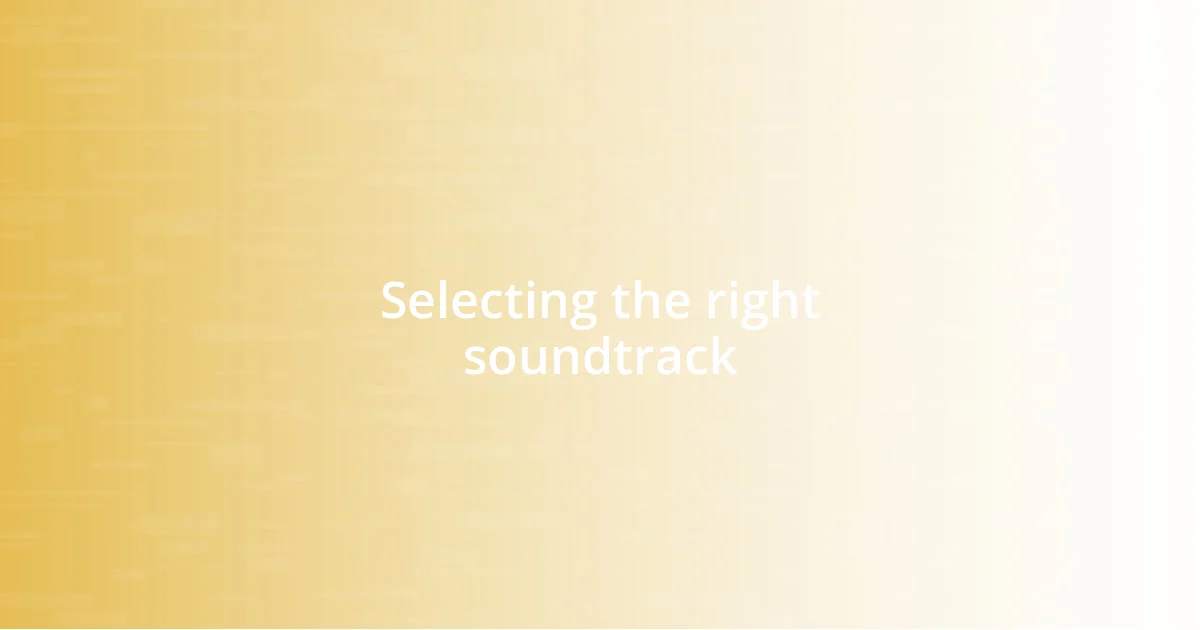
Selecting the right soundtrack
Selecting the right soundtrack is crucial for creating an unforgettable experience. I remember when we had to choose music for a screening of a classic film. It’s a delicate balance; the score should enhance the emotional beats of the film without overpowering it. Sometimes, it feels like finding the perfect pair of shoes—how they fit with the film’s visuals and themes can make all the difference.
In my experience, one key factor is the tone of the film. For instance, I once worked on a project where we opted for a light-hearted, whimsical score for a romantic comedy. This decision transformed the audience’s enjoyment, adding layers of laughter during pivotal scenes. Have you ever noticed how certain sounds can evoke specific emotions? Choosing pieces that complement the film’s essence can elevate the entire event.
Another aspect to consider is the familiarity of the soundtrack to the audience. During a recent performance, we played a beloved classic score. The collective reaction was electric—a mix of nostalgia and joy enveloped the venue. It reminded me how a well-known piece can create an immediate connection between the audience and the story. Ultimately, selecting the right soundtrack isn’t just about music; it’s about crafting a shared emotional journey.
| Factor | Considerations |
|---|---|
| Film Genre | Ensure the score matches the film’s tone, whether it’s somber, joyful, or suspenseful. |
| Audience Familiarity | Opt for recognizable music to evoke nostalgia and enhance engagement. |
| Emotional Impact | Select music that underscores key moments for a more immersive experience. |

Techniques for effective performance
One technique that has always helped me during performances is the use of dynamic range. I clearly remember one show where we connected the audience to the film’s climax by gradually building the intensity of our music. It was like surfing on a wave; as the sound crescendoed, I could feel the audience lean in, hanging onto every note. Doesn’t it feel magical when you can physically sense the energy in the room shift with your performance?
Another strategy to enhance effectiveness is maintaining strong communication within the ensemble. During a particularly challenging scene, I noticed my fellow musicians and I were subtly looking at each other, gauging emotions and anticipating shifts in the score. This unspoken dialogue created a seamless experience for both us and the audience. Have you ever felt that surge of unity on stage? It’s a reminder that we’re not just playing music; we’re weaving a collective story.
I also believe that incorporating improvisation can bring a unique flair to a performance. At one memorable event, I decided to add a spontaneous flourish to a scene that had an unexpected emotional twist. The audience responded with surprise and delight, and I loved that feeling of taking risks. Do you think improvisation can sometimes make an already amazing moment even more special? In my experience, that element of surprise can deepen the connection between the performers and the audience, creating a truly unforgettable night.

Challenges faced in live performances
During live performances, timing can often be a double-edged sword. I recall a particularly tense moment when we were just a beat off during a dramatic scene. The palpable tension in the air shifted as the audience could feel the misstep. It was a reminder that every second counts—one wrong note can disrupt the emotional flow we’re striving to create. Have you ever felt that sudden drop in energy during a live event? It takes real skill to regain that momentum and re-engage the crowd.
Another challenge that frequently arises is the unpredictability of live sound. I remember once when a malfunctioning microphone nearly derailed a performance. The initial panic was overwhelming, but my fellow musicians instinctively pooled our resources, adjusting our dynamics to fill the space. Such moments remind me how important it is to stay flexible. Have you ever experienced a hiccup during a performance that turned into something unexpectedly wonderful? I’ve come to see these mishaps as opportunities to showcase our resilience and creativity.
Finally, managing audience interaction can also be quite tricky. I once led a performance where the audience was overly enthusiastic, shouting out requests during a quieter moment. While their excitement was heartwarming, it completely disrupted the atmosphere we’d built. Striking a balance is essential. How do we maintain that connection while guiding the audience’s energy? In my experience, setting the tone from the start can help; engaging them without losing sight of the narrative allows for shared moments, enhancing the overall experience for everyone involved.
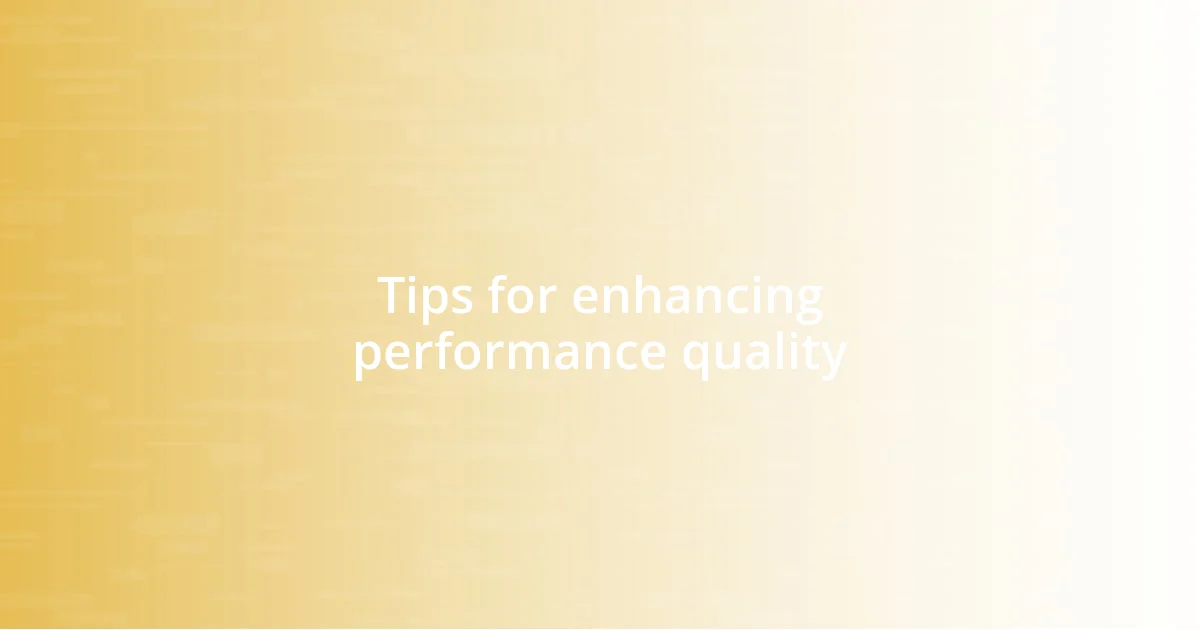
Tips for enhancing performance quality
One of the best tips I can offer for enhancing performance quality is to focus on rehearsal dynamics. In a past project, we spent a few extra sessions not just playing through the score but experimenting with different interpretations. I’ll never forget the moment we discovered a softer, haunting version of a pivotal scene. Isn’t it incredible how a single change in approach can elevate the entire performance? By allowing time for exploration, we uncovered nuances that truly transformed our delivery.
It’s also essential to cultivate the right atmosphere for both the performers and the audience. I’ve experienced performances where the lighting and staging made all the difference. One show, in particular, featured dynamic lighting that shifted in response to our music. The synergy between the visuals and our sound created an immersive experience that left the audience spellbound. How often do we think about the emotional impact of our environment? I’ve learned that when we invest in our surroundings, it echoes in the quality of our performance.
Lastly, incorporating audience feedback can significantly enhance your performance quality. During a festival, I encouraged audience members to share their reactions during a break. One person mentioned a specific moment that resonated with them, and it made me rethink my approach for the following show. Connecting with the audience in this way not only informs future performances but also strengthens the bond between us. Have you ever tried to create a dialogue with your audience? From my viewpoint, it’s a fantastic way to keep evolving as an artist.
